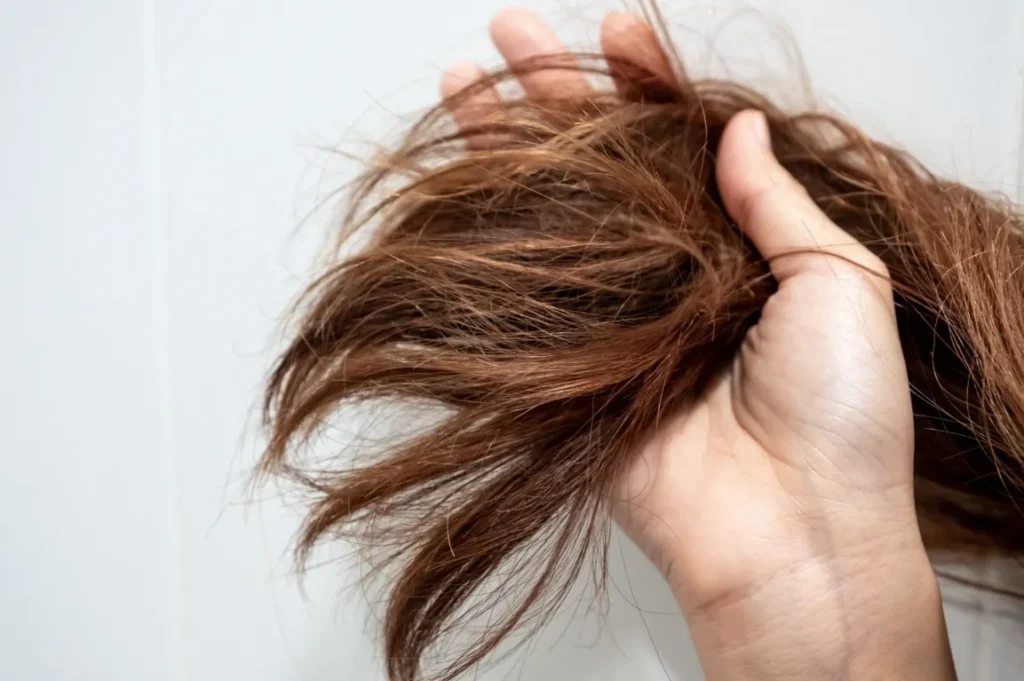Damaged hair can be stressful—it’s dry, brittle, and prone to breakage. But don’t worry! With the right knowledge and care, you can repair your hair and keep it looking strong and healthy. In this guide, we’ll break down the best ways to treat damaged hair, prevent breakage, and even share some expert insights from Kate Ross, a professional hair specialist.
1. Understand What Causes Hair Damage
Before fixing the problem, it’s essential to understand the root cause. Hair damage happens when the outer layer (cuticle) becomes cracked, leading to weaker strands. Kate Ross explains, “The most common causes of damage include overuse of heat tools, chemical treatments, poor haircare habits, and environmental stressors like sun exposure or pollution.”
Key culprits:
- Heat styling tools (straighteners, curling irons, blow dryers)
- Chemical treatments (bleaching, perming, and frequent coloring)
- Harsh haircare products with sulfates or alcohol
- Over-washing or not conditioning properly
2. Moisturize, Moisturize, Moisturize
Hydration is the foundation of repairing damaged hair. “Dry hair is more prone to breaking,” says Kate Ross. Focus on adding moisture with:
- Deep conditioners and hair masks: Use products with nourishing ingredients like shea butter, coconut oil, and keratin.
- Leave-in conditioners: Perfect for daily hydration, especially if you have frizzy or dry hair.
- Natural oils: Argan oil, jojoba oil, and castor oil work wonders to lock in moisture and reduce split ends.
3. Protect Your Hair From Heat Damage
If you can’t live without your blow dryer or straightener, use them wisely.
- Use a heat protectant: Always apply a thermal spray or serum before styling.
- Lower the temperature: Stick to the lowest effective heat setting to minimize damage.
- Air dry when possible: Give your hair a break from heat tools by air drying or towel drying with a microfiber towel.
4. Incorporate Hair Toppers and Extensions
If your damaged hair needs a break, hair toppers and extensions can help.
- Hair toppers: These are ideal for thinning or damaged areas on the crown. According to Kate Ross, “Hair toppers are lightweight and blend seamlessly, making them a fantastic solution while you work on repairing your natural hair.”
- Extensions: They provide instant volume and length, allowing you to style without stressing your natural hair. Clip-in hair extensions are especially good for damage-free styling.
5. Strengthen With Protein Treatments
Protein is vital for repairing damaged hair. “When hair is weak or brittle, protein treatments can rebuild its strength,” says Kate Ross.
- DIY protein masks: Use ingredients like egg yolks or yogurt to create a natural treatment at home.
- Salon treatments: Keratin or protein treatments can provide long-lasting results for severely damaged hair.
6. Trim Regularly to Prevent Further Breakage
It might seem counterintuitive, but trimming damaged ends helps prevent splits from traveling up the hair shaft. “A regular trim every 6-8 weeks keeps your hair healthier and reduces the appearance of damage,” Kate Ross advises.
7. Repair From the Inside Out
Hair health starts from within, so don’t overlook your diet and supplements.
- Protein-rich foods: Eggs, fish, and nuts support hair strength.
- Vitamins: Biotin, Vitamin E, and Omega-3 fatty acids can boost growth and repair.
- Hydration: Drink plenty of water to keep your hair hydrated from the inside out.
8. Protect Hair While Sleeping
Nighttime habits can either damage or protect your hair.
- Switch to silk pillowcases: They reduce friction and prevent breakage.
- Use a protective hairstyle: Loose braids or buns can minimize tangling while you sleep.
9. Avoid Harsh Products
Check the ingredients in your haircare products. Harsh sulfates, parabens, and alcohols can strip moisture and weaken hair. Opt for sulfate-free shampoos and conditioners with gentle, nourishing formulas.
10. Be Patient and Consistent
Repairing damaged hair takes time. Kate Ross emphasizes, “The key is consistency. Stick to a routine, and over time, you’ll notice significant improvement in your hair’s texture, strength, and appearance.”
Bonus Tips: Wigs as a Protective Style
If your hair is too damaged to style, consider wigs as a temporary option.
- Why wigs work: They allow your natural hair to rest and recover while giving you the freedom to try different looks.
- Kate’s advice: “Invest in high-quality human hair wigs—they look natural and can be styled just like your own hair.”
Final Thoughts
Damaged hair can feel overwhelming, but with the right care and tools, you can bring it back to life. Hydration, protection, and smart styling choices are your best friends. And remember, hair toppers and wigs are excellent options to feel confident while your hair heals.
Stick to these tips, stay patient, and let your hair journey be as stress-free as possible!
